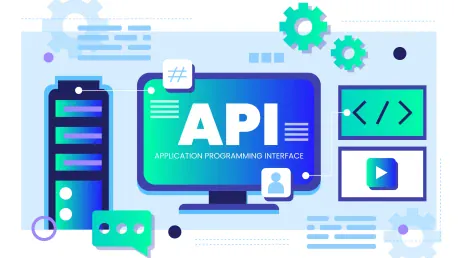In today’s interconnected digital landscape, the use of APIs (Application Programming Interfaces) has experienced an unprecedented surge, driving innovation but simultaneously exposing organizations to heightened security risks. According to the Q1 2025 State of API Security Report by Salt Security, nearly all organizations, a staggering 99%, faced API-related security issues over the past year. This alarming statistic underscores the pressing need for businesses to reassess their security strategies in the context of cloud migration, platform integration, and data monetization, all of which contribute to the rapid expansion of API ecosystems.
The Surge of API Adoption
Increase in API Volume
The explosive growth in API adoption cannot be overlooked as organizations across the globe strive to achieve efficiency and agility. Over the past year, 30% of organizations reported experiencing a 51-100% increase in the number of APIs they manage, while 25% saw their APIs grow by more than 100%. This rapid expansion stretches security teams thin, making it increasingly difficult to maintain accurate and up-to-date API inventories. Alarmingly, the report indicates that 58% of organizations monitor their APIs less than daily, and only 20% are able to achieve real-time monitoring. The current dynamic highlights that despite the best intentions, many companies are chasing their tails when it comes to API security.
Growing Complexity and Challenges
As the complexity of API environments grows, so do the security challenges. Misconfigurations and broken object-level authorization, identified by 37% of respondents, remain at the core of these issues. Additionally, sensitive data exposure and authentication failures, reported by 34% and 29% of organizations respectively, underline the urgent need for a holistic approach to securing APIs. These vulnerabilities often result from gaps in security infrastructure, inadequate testing, and difficulty in cataloging APIs. It is evident that more comprehensive strategies are required to adapt to this rapidly evolving landscape.
Investments and Obstacles in API Security
Budget Increases and Constraints
Despite the escalating challenges, there has been a noticeable increase in investments aimed at fortifying API security. More than half of the surveyed organizations have ramped up their security budgets in response to the growing threats. However, it is essential to recognize that financial constraints continue to plague a significant portion of these companies. Approximately 30% still struggle with limited funds, which directly impacts their ability to effectively implement comprehensive security solutions. Additionally, 22% face personnel shortages, and 10% lack adequate security tools, further complicating their efforts to secure their API ecosystems.
Delayed Application Rollouts
The volatile API security landscape has tangible repercussions on business operations. A notable finding from the report indicates that 55% of organizations have delayed their application rollouts due to security concerns surrounding their APIs. This delay not only stymies growth but also puts undue pressure on development teams to balance innovation with security. Compounding the issue is the fact that 14% of respondents find their API programs increasingly difficult to manage. These operational disruptions call for a more sustainable approach that integrates security throughout the API development lifecycle.
Modern Security Practices and Emerging Threats
Need for Dynamic and Agile Approaches
In light of these challenges, experts like Thomas Richards and Piyush Pandey stress the need for modern security practices that transcend traditional perimeter-based strategies. As API ecosystems expand, it becomes imperative to adopt more dynamic and agile access controls. Real-time monitoring, coupled with frameworks such as the OWASP API Security Top Ten, can help organizations identify and mitigate security vulnerabilities more effectively. These practices enable companies to respond swiftly to emerging threats and reduce the risk of unauthorized access and data breaches within their API environments.
Authenticated User-Based Attacks
Another critical insight from the report is that 95% of API attacks originate from authenticated users, with external-facing APIs being particularly vulnerable. Security misconfigurations, cited by 54% of respondents, remain a prevalent issue. Broken object-level authorization and API authentication failures, reported by 27% and 19% respectively, highlight the need for robust authentication mechanisms. This statistic underscores the importance of not only securing the perimeters but also ensuring that authenticated users are properly monitored and managed to prevent internal threats and abuse.
Addressing AI-Driven Threats and Future Considerations
Generative AI-Induced Risks
The advent of Generative AI (GenAI) has introduced new dimensions of risk in the API security landscape. According to the report, a third of the respondents lack confidence in their ability to detect AI-driven attacks, and 31% express concerns about the security of AI-generated code. These emerging threats necessitate the deployment of specialized governance frameworks and AI-specific security tools. Approximately 26% of organizations have already implemented such frameworks, and 37% are investing in AI security tools to mitigate these novel risks. As AI technologies continue to evolve, it becomes essential for organizations to stay ahead by continuously updating their security postures.
Enhancing Security Strategies
In our interconnected digital world, APIs (Application Programming Interfaces) have seen remarkable growth, driving significant innovation. This rise in API usage, however, also increases security risks for organizations. The Q1 2025 State of API Security Report by Salt Security highlights a concerning trend: almost every organization, a staggering 99%, encountered security issues related to APIs over the past year. This statistic highlights the urgent need for businesses to constantly update their security strategies, especially given the complexities of cloud migration, platform integration, and data monetization. These processes fuel the rapid growth of API ecosystems, but they also expose organizations to new vulnerabilities. As companies continue to embrace APIs to enhance functionality and connectivity, they must prioritize robust security measures to protect sensitive data and maintain trust. The evolving digital environment makes it crucial for businesses to stay ahead of potential threats by continuously adapting and reinforcing their API security protocols.









